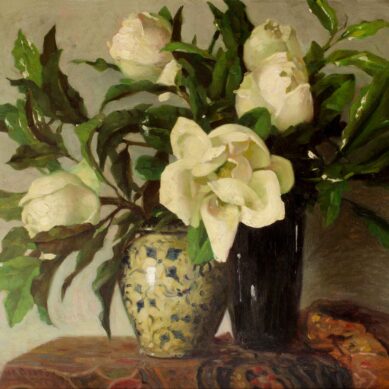You searched
Sculptor
Crocetti Venanzo
Are you interested in the sales or the purchase of his artworks?
We buy works of this artist
and of other painters and sculptors from the 16th century to the first half of the 20th century
The Berardi gallery offers a free and without obligation service for evaluation of ancient and modern art . To find your way in the art market, very complex and full of nuances, it is better to rely on a professional consultant who can answer fast and concretely to your needs. The clarity of the answers will resolve effectively the need to estimate or sell an asset.
Contact us immediately without commitment
Answers also in 24 hours:
Crocetti Venanzo
Crocetti Venanzo
Venanzo Crocetti was born in 1913 in Giulianova to a family of humble origins, and from an early age he was faced with very difficult situations and events. He was in fact orphaned at a very young age of 12.
Venanzo has a great aptitude for the arts, and when he is staying with his paternal uncle in Porto Recanati he has the good fortune to meet Biagio Biagetti, director of the Vatican Museums and founder of the Vatican Laboratory for the restoration of works of art, who introduces him to the Vatican Museums. He then moved to Rome in 1928, when he was only 15 years old, and here he trained and worked as a restorer in the Vatican Laboratories, participating in the Sistine Chapel restoration site. Crocetti had no academic training, and the Sistine Chapel and the Vatican Museums were his school: he learned in the field, observing the art of the old masters of the Italian Renaissance.
In the 1930s he obtained his first awards, such as the National Prize of the Academy of St. Luke or that of the National Exhibition in Florence, making his artistic skills known, so much so that he obtained an invitation to the Venice Biennale in 1934.
Venanzo Crocetti’s subjects, from animals to sacred sculpture
One of the themes dearest to him is that of animals, as it reminds him of his rural childhood with his family. Crocetti is a very observant artist, and he also observes animals a lot at the Rome Zoo and Schneider’s circus. Here he studies closely especially the lions that would later become a typical subject of his production.
Through the many sketches he makes he is able to study the dynamics of the movement of his sculptures and give lightness to bronze, which by its nature is instead a very heavy material.
Another theme on which he focuses more is the religious one. In fact in 1936 he made the bronze statue of St. Michael the Archangel for Aprilia, and in the following year he worked on the high relief for the church of St. Benedict in Pomezia.
In Rome he collaborated on the creation of the Chapel in the Basilica of St. Eugene; made the Great Crucifixion in bronze for the high altar of the new Basilica of St. Leo the Great; began the Stations of the Cross for the new Basilica of St. John in the Woods; and above all won the international competition for one of the three doors of St. Peter’s Basilica, which was to be inaugurated in 1965 in the presence of Pope Paul IV.
On the occasion of this very important commission he decided to purchase a house and studio of the appropriate size to accommodate a work of such magnitude, a house where he then settled for the rest of his life and which today has become a House Museum dedicated to him.
In the meantime he continued to exhibit on various occasions: at Fascist Union exhibitions and at several editions of the Quadriennale in Rome.
The relationship with Abruzzo
The link with his Abruzzo was always very intense and today some of his works can be found in the area. For his Giulianova he made the Madonna and Child with Angels in stone and marble and the monumental bronze Crucifix for the high altar of the Cathedral of San Flaviano. In Teramo some of his works took up residence in various parks such as in Parco Tigli or in the park of the Banca di Teramo; then he made a bas-relief in the rear facade of the cathedral that simulates the entrance door; and he created the bronze monument dedicated to Mario Capuani, a man who had distinguished himself for the anti-fascist struggle in Teramo.
Venanzo Crocetti’s fortune
Venanzo Crocetti is a prominent artist in Italian art without ever actually entering among the most influential and well-known names, because by character he did not like to be at the center of attention and deal with critics and the art market. His only pleasure was spending hours in his studio and bringing his sketches to life.
He achieved, however, a fair amount of success in other parts of the world, especially in Japan, where a solo exhibition of his work was organized in 1970 and then moved on to various cities. Today more than 10 museums and parks in the Land of the Rising Sun house his works. Another city that praised him in his lifetime is St. Petersburg, whose Hermitage Museum dedicated a permanent room to him in the 1990s.
Also important were his teachings for future generations, in fact in 1946 he was given the chair of sculpture at the Venice Academy of Fine Arts, a chair that had previously been Arturo Martini’s.
Venanzo Crocetti died in Rome in 2003, leaving all his works in the house where he had lived, which is managed today by the Venanzo Crocetti Foundation.
Emanuela Di Vivona





